
Descent: FreeSpace – The Great War, known as Conflict: FreeSpace – The Great War in Europe, is a 1998 space combat simulation IBM PC compatible computer game developed by Volition, when it was split off from Parallax Software, and published by Interplay Productions. In 2001, it was ported to the Amiga platform as FreeSpace: The Great War by Hyperion Entertainment. The game places players in the role of a human pilot, who operates in several classes of starfighter and combats against opposing forces, either human or alien, in various space-faring environments, such as in orbit above a planet or within an asteroid belt. The story of the game's single player campaign focuses on a war in the 24th century between two factions, one human and the other alien, that is interrupted in its fourteenth year by the arrival of an enigmatic and militant alien race, whose genocidal advance forces the two sides into a ceasefire in order to work together to halt the threat.

Starsiege: Tribes is a first-person shooter video game. It is the first of the Tribes video game series and follows the story from Metaltech: Earthsiege and Starsiege. It was developed by Dynamix and published by Sierra On-Line in 1998. An expansion pack, Tribes Extreme, was cancelled; it was supposed to add single-player missions, multiplayer maps, and bot AI.
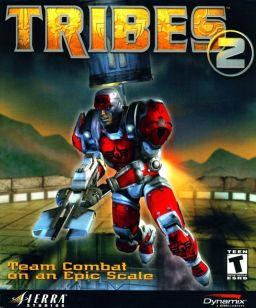
Tribes 2 is a first-person shooter multiplayer video game developed by Dynamix and published by Sierra On-Line in 2001 as a sequel to Starsiege: Tribes.

Red Baron is a combat flight simulation video game for MS-DOS created by Damon Slye at Dynamix. It was published by Sierra On-Line in 1990.
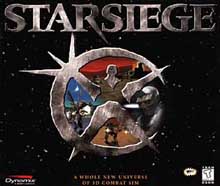
Starsiege is a mecha-style vehicle simulation game developed by Dynamix and released in 1999. Starsiege is set in the Metaltech/Earthsiege universe, which contains its predecessors Earthsiege (1994), Battledrome (1994), and Earthsiege 2 (1996). This universe also includes action game Hunter Hunted (1996), strategy games Mission Force: Cyberstorm (1996) and Cyberstorm 2: Corporate Wars (1998). It also includes the sequelsStarsiege: Tribes and all subsequent Tribes titles. In 2015, this game and the rest of the Metaltech/Tribes series were released as freeware by Hi-Rez Studios, but Battledrome and the Cyberstorm series were not.
Guild Wars is an online role-playing game franchise developed by ArenaNet and published by NCSOFT. The games were critically well received and won many editor's choice awards, as well as awards such as "Massively Multiplayer/Persistent World Game of the Year" by the Academy of Interactive Arts & Sciences, as well as Best Value, Best Massively Multiplayer Online Role-Playing Game (MMORPG), and Best Game. Guild Wars was noted for being the "first major MMO to adopt a business model not based on monthly subscription fees", its instanced approach to gameplay, and the quality of the graphics and play for computers with low specifications. In April 2009, NCSoft announced that 6 million units of games in the Guild Wars series had been sold. The sequel and fourth major entry into the series, Guild Wars 2, was announced in March 2007 and released on August 28, 2012. It features updated graphics and gameplay mechanics, and continues the original Guild Wars tradition of no subscription fees. The Guild Wars series had sold 11.5 million copies by August 2015
Game balance is a branch of game design with the intention of improving gameplay and user experience by balancing difficulty and fairness. Game balance consists of adjusting rewards, challenges, and/or elements of a game to create the intended player experience.

Forced is a single-player and co-op action role-playing game developed by BetaDwarf, released in October 2013 for Windows, OS X and Linux through the Steam platform as well as Wii U. It is about gladiators fighting for their freedom in a fantasy arena where they are assisted by a spirit-like character called Balfus. Gameplay consists of selecting a weapon class and abilities to combat the various enemies of each arena, while solving puzzles using the help of Balfus. BetaDwarf was formed by a small group of students in 2011, who began developing the game in an unused classroom in Aalborg University – Copenhagen, Denmark. They were removed months later and launched a successful Kickstarter campaign involving an Imgur picture which documented their progress. Forced received moderate to favorable reviews with most critics praising its competitive gameplay and puzzle-system. The game's weak plot, technical glitches and excess difficulty were the negative highlights. It won the Level Up 2013 Intel award and BetaDwarf received the Danish Developer Of The Year (2013) for it.

Shattered Steel is a mech simulation game developed by BioWare and published by Interplay Productions for MS-DOS in 1996. It was later ported to Mac OS by now-defunct Logicware. It is notable for the deformable terrain effects, and for being BioWare's first developed game.

Metaltech: Earthsiege is a mecha-style simulation video game developed by Dynamix and released in 1994.

Earthsiege 2 is a mech-style vehicle simulation game developed by Dynamix, produced by Frank Evers (NYPH), and released in 1996. Earthsiege 2 is set in the Earthsiege universe, which contains its predecessors Earthsiege (1994) and Battledrome (1995), as well as the action game Hunter Hunted (1996), strategy games MissionForce: CyberStorm (1997) and Cyberstorm 2: Corporate Wars (1998), simulation Starsiege (1999), and first-person shooters Starsiege: Tribes (1999), Tribes 2 (2001), Tribes: Aerial Assault (2002), Tribes: Vengeance (2004) and Tribes: Ascend (2012).

Armored Core is a 1997 third-person shooter mecha video game developed by FromSoftware and published by Sony Computer Entertainment for the PlayStation. It was originally released in Japan by FromSoftware in July 1997 and in North America in October 1997 and Europe in 1998 by Sony Computer Entertainment. The game is the first entry in the Armored Core series. A digital port was released in 2007 in Japan and 2015 in North America on the PlayStation Network as a part of the PSone Classics line of games.

Phantasy Star Online Episode III: C.A.R.D. Revolution is a turn-based role-playing video game released for the GameCube in 2003. It has a card-based play style, making it unique among games in the Phantasy Star Online series. The story of the game takes place twenty-one years after the fourth episode, itself set after the first two episodes.

MechWarrior 4: Vengeance is a vehicle simulation game, developed by FASA Interactive and published by Microsoft. It was released on November 22, 2000. It is the fourth game in MechWarrior series. It takes place in BattleTech universe where the pinnacle of all war machines are huge, heavily armed robots called BattleMechs. The player pilots one of these "'Mechs" and uses variety of available weapons to battle enemy 'Mechs, tanks and other vehicles. An expansion pack, MechWarrior 4: Black Knight, was released in 2001, and a subsequent stand-alone expansion, MechWarrior 4: Mercenaries, was released on November 7, 2002. Two smaller expansions, Inner Sphere Mech Pak and Clan Mech Pak, were also released in 2002.
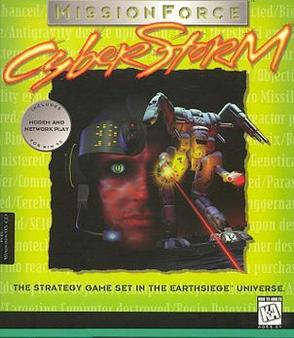
MissionForce: CyberStorm is a turn-based strategy game developed by Dynamix and published in 1996 by Sierra On-Line. The game is set in the Metaltech universe created by Dynamix, and the player control units of HERCULANs : bipedal warmachines of varying size and construct, more commonly known as HERCs. Although CyberStorm was a limited commercial success, it sold well enough to spawn a 1998 sequel called CyberStorm 2: Corporate Wars. It was digitally released by Activision on July 23, 2019 on GOG.com.

Guild Wars is a multiplayer online action role-playing game developed by ArenaNet, a subsidiary of South Korean game publisher NCSOFT, and released in 2005. As the original installment of the Guild Wars series, its campaign was retroactively titled Prophecies to differentiate it from the content of subsequent releases. The game contains a co-operative role-playing portion and a competitive Player versus Player (PvP) portion. In PvP, players may use either their co-operative characters or PvP-exclusive characters who are inherently maximum level and have account-based access to unlocked content.

Hunter Hunted is a side-scrolling action computer game developed by K.A.A. and published by Sierra On-Line on November 8, 1996. The player controls a humanoid creature who fights enemies, completes objectives, and tries to find the hidden exit in each level. Of the two, Garathe possesses superior strength and stamina, while Jake can take advantage of more sophisticated weaponry.
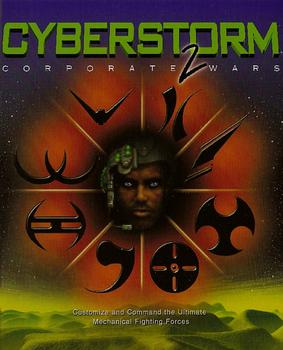
CyberStorm 2: Corporate Wars is a turn-based and real-time strategy game developed by Dynamix and released in 1998 as a sequel to MissionForce: CyberStorm. It was published by Sierra On-Line.
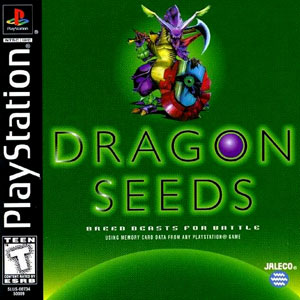
Dragonseeds, released in Japan as Dragon Seeds: Saishū Shinka Keitai, is a video game where the player must clone a dragon and train it to fight. The player gets to choose from five basic dragon types and two secret dragons. The game also allows the player to receive extra dragons through the saves files of certain games, if the memory card is placed at the second slot. The game also allows a two-player mode, where each player can battle each other with their own dragons.
Robocraft is an online vehicular combat game developed and published by Freejam Games. The game is set on different planets, with players constructing robots to fight with and against others in battle. The game features contained garage bays in which players can build various functional vehicles with basic block-based parts, such as cubes and wheels, along with weapons that can be used for combat. The initial alpha build was released in March 2013, and gained over 300,000 players by the following year. It officially released out of beta on August 24, 2017.

















